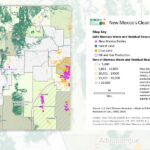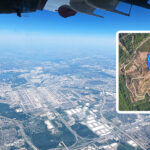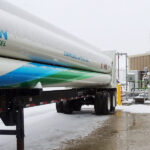Top: Case studies based on dairy production regions in Wisconsin were used in the research. Anaerobic digester in Sun Prairie, Wisconsin (above). Photo by Mahmoud Sharara
Researchers at North Carolina State University (NCSU) and the University of Wisconsin, Madison have developed a computational model that could boost investment in farm-based sustainable energy projects by allowing investors to more accurately predict whether a project will turn a profit. The model accounts for a variety of known factors, such as which species a farm is raising, the size of each farm and where each farm is located. But what sets the model apart is the way it accounts for uncertainty, explains Mahmoud Sharara, an assistant professor of biological and agricultural engineering at NCSU, telling users where a system should be located, what its capacity should be, and participation level (cluster size). Sharara is the lead author of a paper recently published on the work, “Planning methodology for anaerobic digestion systems on animal production facilities under uncertainty,” in the journal Waste Management.
Two case studies based on dairy production regions in Wisconsin were developed to test the model and demonstrate its capabilities. Herd sizes and spatial distribution in a given region were found to be critical factors in determining the viability of digestion projects in general, and collaborative digestion systems in particular. “Electricity sale price and biomethane potential of feedstock utilized were found to be the most restrictive to the feasibility of AD adoption,” summarizes the abstract of the paper. “Changing the optimization objective function, to adopting maximization, favored the formation of collaborative AD facilities for both case studies evaluated.”
Notes Sharara: “We’re also hoping to work more closely with anaerobic digester system developers to fine-tune our assessment of the costs related to these systems,” notes Sharara. “And, ultimately, we’d like to expand our work to account for efforts to use the solids left behind after anaerobic digestion — such as projects that convert these solids into marketable fertilizer.” Coauthors of the paper are Maxwell Owusu-Twum, a visiting scholar at NC State; and Troy Runge and Rebecca Larson of the University of Wisconsin-Madison. The work was done with support from Dane County, Wisconsin.












